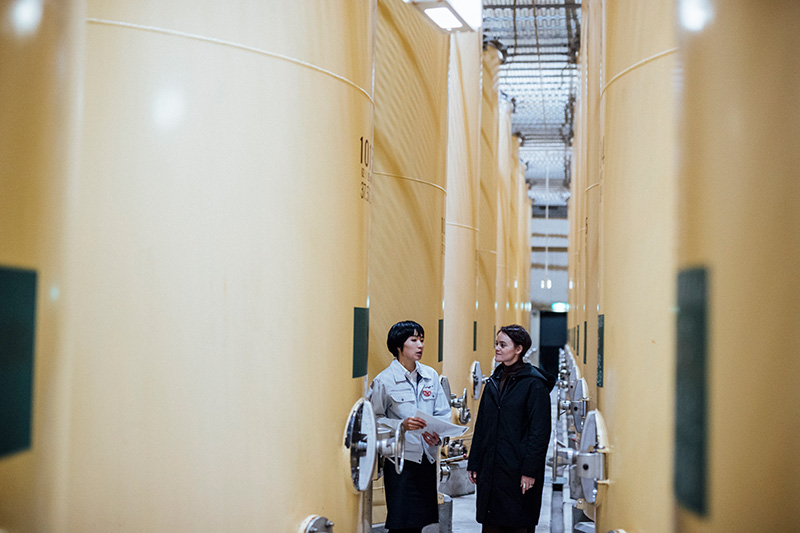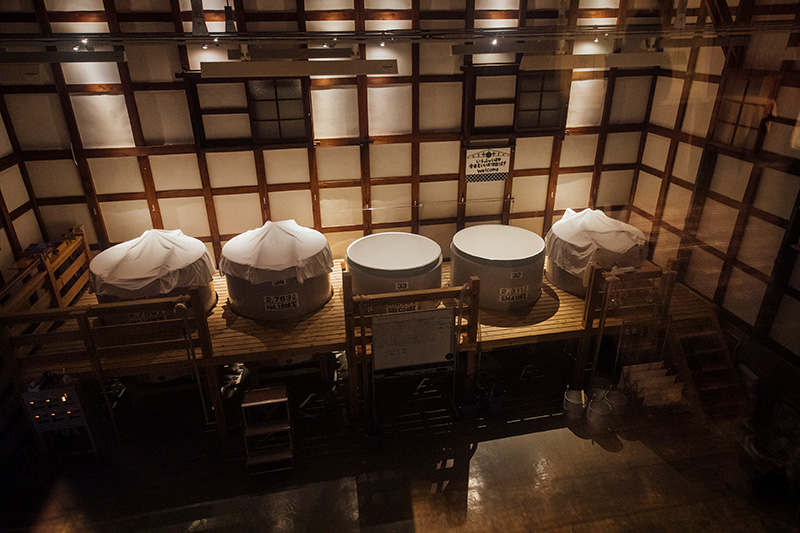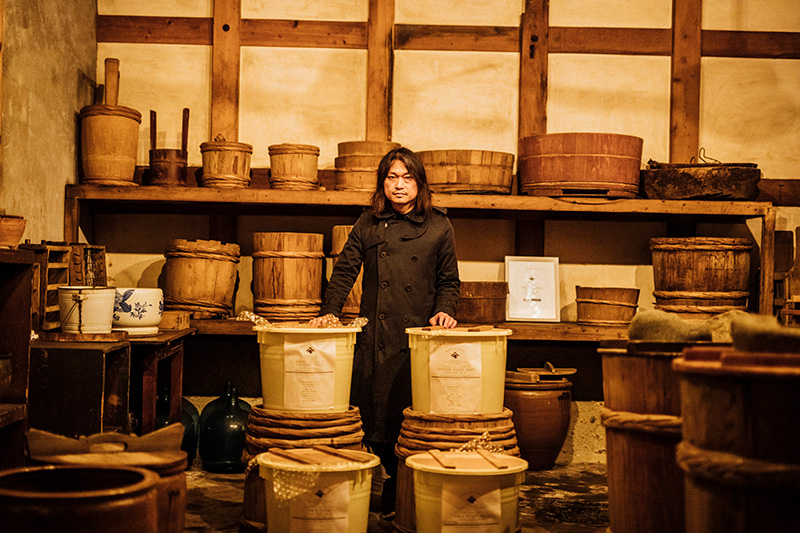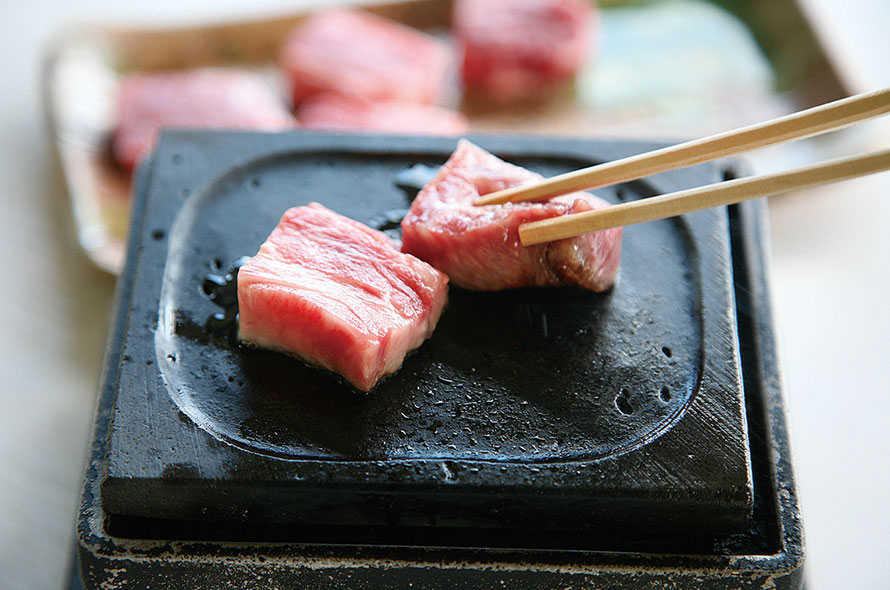A deep understanding of fermentation is the basis for sake prowess and experimentation.
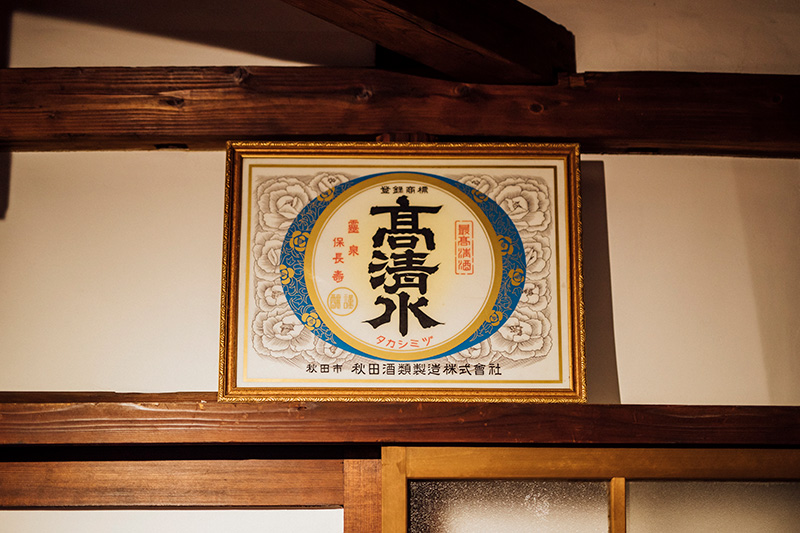
Akita’s cold winters, an abundance of pure water, high-quality local rice and unique native yeast strains, combined with a culture of innovation have put the prefecture on the map as one of Japan’s preeminent sake-producing regions. This means a visit to a sake brewery in Akita is a travel essential – especially if, like me, you’re on a fermentation pilgrimage.
Takashimizu Sake Brewery is Akita’s largest sake brewery, formed out of the merging of 12 small breweries in 1944. I was curious to visit Takashimizu after learning of their amber-hued sake, ‘Kaon Jyukusei Gedatsusyu’, which is garnering attention from foreign chefs and sommeliers. When sake is stored and aged, it’s kept at a cold temperature; but in a bold, innovative move, Akita’s Takashimizu Sake Brewery warm one of their brews during maturation to create their Kaon Jyukusei Gedatsusyu – the first of its kind in the world.
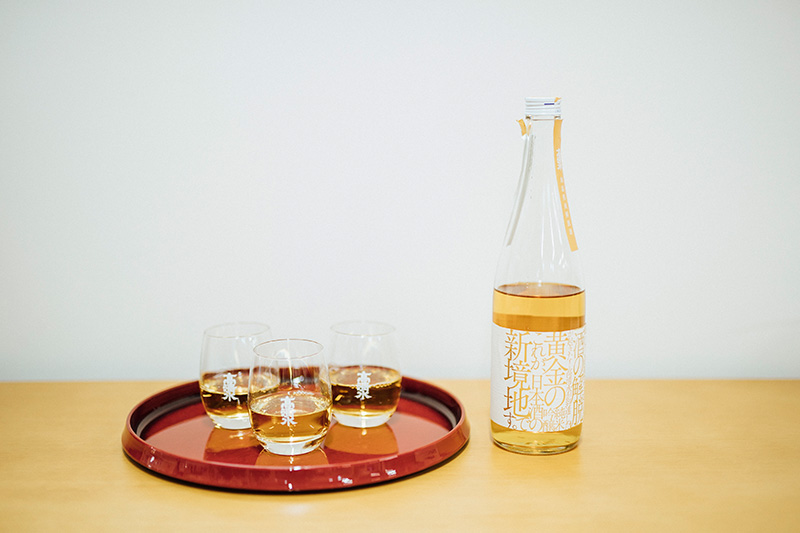
Arriving at Takashimizu’s head location in Kawashiri, just a 10-minute drive from Akita station, my guide for the day, Kon Misako, explains that Takashimizu is spread over two locations. At Kawashiri, the focus is on preserving traditional sake varieties and production techniques, and at the second location in Goshono, it’s also on innovation.
To learn about the fundamentals of the sake-making process, Kon takes us to the smallest of Takashimizu’s breweries, Sennin-gura, where their traditional sake varieties are all still made manually, without any modern mechanization. Here, the kurabito (brewery workers) learn the traditional techniques to brew sake, and the spirit of working together.
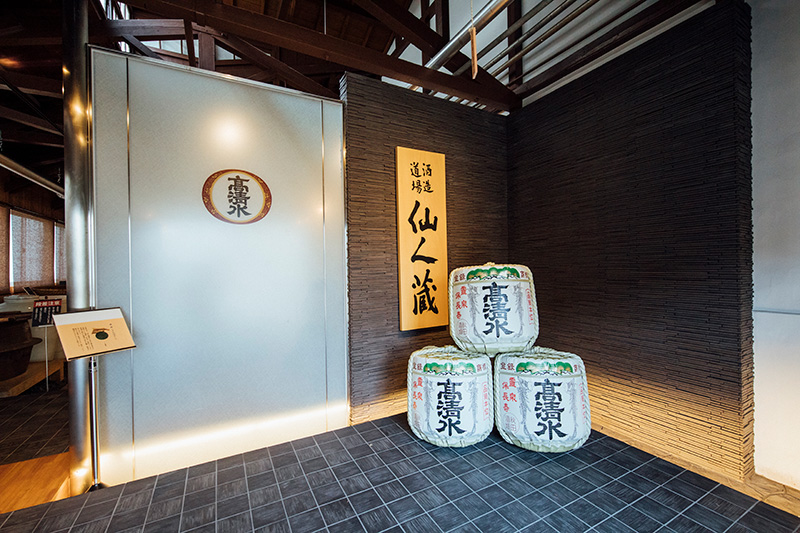
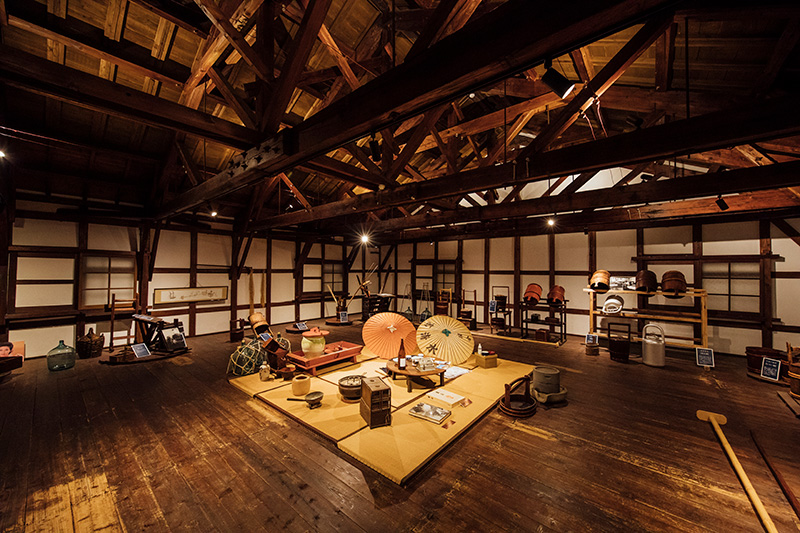
Although sake is often called ‘rice wine’ outside of Japan, the production is more complicated. Sake is essentially a combination of steamed rice, koji rice (steamed rice with Aspergillus oryzae mold cultivated onto it), water, and yeast.
“Like wine, sake is produced through fermentation,” Kon says, “But wine is made from grapes, which contain sugar, so when the grapes are exposed to yeast they produce alcohol. Sake is made from rice, which requires an extra step to turn the starch into sugars.”
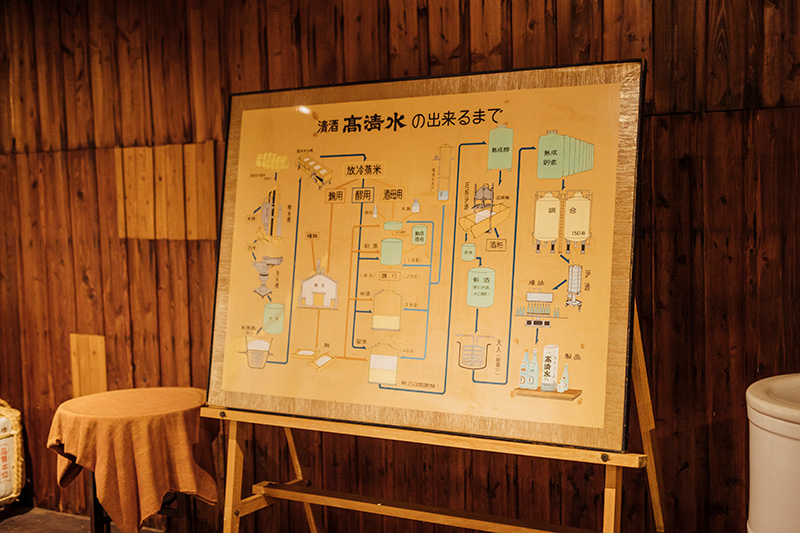
This is where koji comes in. The magical mold converts the starch in rice into glucose, and the yeast converts the glucose into alcohol through fermentation. These two processes happen simultaneously in one tank, making sake different from both wine and beer.
Sake making may only have a few ingredients, but the variables in ingredients and production methods mean that an infinite array of aroma and flavor profiles are possible. One of these variables is the rice polishing ratio, Kon explains as she reaches for glass vessels filled with rice.
“You can see the dramatic difference in size and color between the different rice grains,” she says. The amount a rice grain is polished determines the grade of sake it produces.
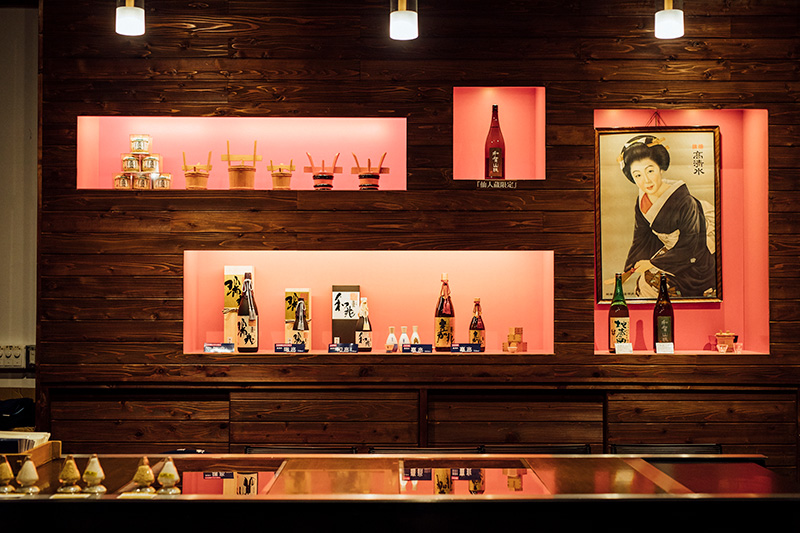
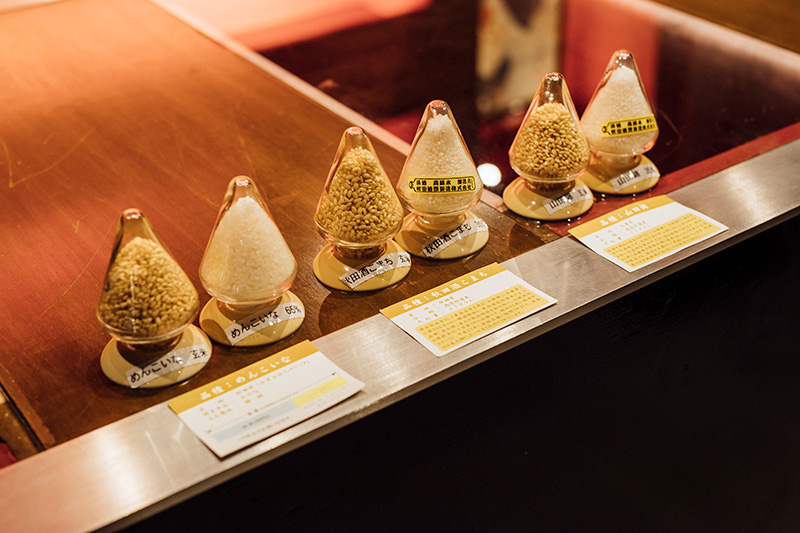
At Takashimizu’s Goshono brewery, the brewers combine traditional techniques and modern equipment to produce new and innovative sake varieties.
“The toji (head brewmaster) at Goshono-gura has received Gold at the National New Season Sake Awards for 16 consecutive years for his skills,” says Kon – the only toji in Japan to have such a long-running accolade.
One of these experimental sake varieties is the game-changing Kaon Jyukusei Gedatsusyu, which manipulates temperature. Another is the ‘α’ sake, which revives an ancient technique of using completed sake in place of water for the brewing process. This type of sake is extremely volatile to produce, and mastering it demonstrates the expert skills and intuition of Takashimizu’s toji, as well as his vision.
After our tour, it’s time to put the knowledge into action. My visit falls in December, which means I’m lucky enough to sample the limited-release hatsu-shibori sake. This is sake from the first pressing of the season, released each year in November. It’s characteristically fresh and vibrant. And, of course, I try the lustrous Kaon Jyukusei Gedatsusyu, and understand why its name means ‘sake that has reached nirvana.’ It’s rich but mellow, with crisp acidity – in a word, heavenly.
